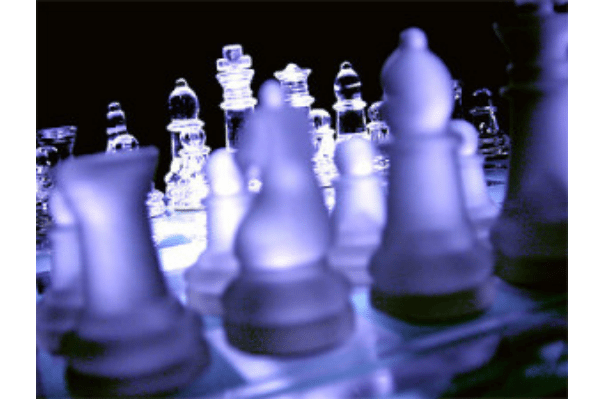What is Game Theory?
Game Theory is a mathematical concept that was made popular by actor, Russell Crowe, in the hit film “A Beautiful Mind” that was screened in 2002. So what exactly is Game Theory?

Game Theory can be defined as a means of analyzing strategic actions that, more often than not, result from the consideration of the expected behaviour of others.
A game, in economics, is defined as a situation whereby rules, strategies and payoffs are involved for parties to make beneficial decisions. In this context, of course, “beneficial” is subjective. Why? Let’s take a look at the following example.
The Prisoners’ Dilemma
This classic illustration has been widely used as a simple yet effective explanation of a game theory.
Once upon a time, there were 2 thieves who were caught while trying to steal a car. The Judge decides to sentence them to a 2-year jail term each. However, the Prosecutor suspects that these men were also responsible for an unsolved bank robbery some years back but he lacks concrete evidence that can tie the men to the case. The Prosecutor then devised a plan with the Judge which he hopes would make the thieves confess to their previous crime.
The Prosecutor placed the 2 prisoners in separate rooms so that they could not communicate with each other. Each was told that they were suspected of an earlier crime and were also told the following:
| 1. | If each of them individually confessed to the robbery, each would get a 3-year jail sentence. |
| 2. | If 1 person confessed and the other did not, the one who confessed would get only a 1-year sentence while the other would serve 10 years in jail. |
| 3. | If neither of them confessed then each of them would only be convicted for the car theft and would be sentenced to jail for 2 years. |
Now if I were any of these prisoners, I would be either trying to maximize gain for myself independent of my accomplice’s decision or I would have to make my decision based on how much I trust him. Do I anticipate him to deny so that I can confess and enjoy the shortest of the jail terms? But what if he confesses and I confess as well and my jail term increases to 3 years? So in that case, shall I deny and hope that he denies as well so that we both need only to serve 2 years in jail? But what if he confesses and now I get a 10-year sentence?! Tricky, isn’t it? Hence, the Prisoners’ Dilemma.
The optimum solution to this problem is actually to find its equilibrium. The equilibrium in a game is also known as the Nash equilibrium, named after John Forbes Nash (the character portrayed by Russell Crowe in the movie). This balance occurs when one takes the best possible action given the action of the other party and vice versa. In this example, a dominant strategy exists for each prisoner. This means that in this dilemma, no matter what the other prisoner decides, one would choose to confess because it is the best course of action. Thus, the equilibrium of the prisoners’ dilemma is that each prisoner confesses.
Yes, I know what you’re thinking. Why shouldn’t the equilibrium be the situation if each prisoner denies? If so, both would only serve a 2-year jail sentence compared to a 3-year one right? Take note that the Nash equilibrium is not achieved with actions that would generate the best payoff. Remember the prisoners are kept in separate rooms and trust is an issue here because if I trust that my accomplice would deny along with me, but he doesn’t, then I am in for a decade behind bars.
This game model is essentially a non-zero sum game, which means that a gain by one player does not necessarily cause a loss in another player. In other words, win-win scenarios exist. On the other hand, there are also zero-sum games, whereby a player gains at the equal expense of other players. An example would be Poker. If I win with a good hand, then I would gain all bets that the other party has made at the table.
So with all these “mambo jumbo” about an economic theory, are you wondering what does all this have to do with organizational behavior and team building?
Internal Strife in Organizations
Different departments within an organization working as independent silos is almost the norm in most companies. Maybe it is the sales department having constant arguments and disagreements with the production department? Maybe it is Sales and Finance being at loggerheads. Sounds familiar?
As team facilitators, we often come across clients complaining about the friction between one department and another, thus putting a huge strain on the entire organization. Maybe with an understanding of game theory, “rival” functions within any organization can learn that such conflicts arise from familiar roots.
Let’s say we have a hypothetical scenario where the product department and the marketing department of a fictitious organization are at loggerheads which each other. The product people are in charge of creating new products while the marketing folks are responsible for selling whatever the product people came up with. However, perhaps due to some misunderstandings and accusations between the two, relationships start to break down and internal strife ensues.
The situation gradually escalates to a point whereby both teams must make a decision on whether, they want to cooperate or refuse to cooperation with each other. Cooperation here can refer to information-sharing, effective communication etc. Hence the following hypothetical scenario, with regards to probable effects each decision has on the organization’s performance as a whole, might just happen.
| 1. | If both departments choose to cooperate, each department would contribute $5 million in revenue to the company directly and/or indirectly. | |||||||||||
| 2. | If one department chooses to cooperate and the other does not, the department that chooses to cooperate would add $7 million to the company’s coffers, while the other contributes $1 million to the organization, whether directly and/or indirectly. | |||||||||||
| 3. | If both departments choose not to cooperate then each will only contribute $1 million to the company, once again either directly and/or indirectly. | |||||||||||
|
The payoff matrix is as follows: Marketing department’s choices |
||||||||||||
| Production department’s choices |
|
|||||||||||
So in this case, what do you think is the Nash equilibrium? In terms of game theory, the Nash equilibrium in this situation would, of course, be the point when both departments cooperate. This is so because no matter what choices that the other department makes, one would choose to cooperate in order to maximize one’s gains. In addition, the organization benefits from the highest total revenue with mutual cooperation, as compared with the rest of the other scenarios. However, would this be the dominant strategy for both departments?
In theory, any business function within the same organization would decide to cooperate to avoid conflict and at the same time, generate win-win results. However, how often have we witness Scenario D as the eventual outcome? Simply because Scenario B and C, more often than not, do not exist in the real world and the fact is that we live in a “tit-for-tat” society.
Any organization leader would tell you that in situations like this, product folks have to learn to co-exist and collaborate with their marketing counterparts because these two key departments are interdependent with each other. However, if one department refuses to cooperate, do you think the resulting party would not follow suit? Assuming ceteris paribus (all things remaining the same), any person would retaliate in response to hostility towards him or her. Eventually, a “bloodbath” begins, leaving both parties crippled, whilst generating negative results.
Why then do teams degenerate to such a state? We will find the answers in the deeper roots of such organizational relationships. These answers lie with two very tenuous components in relationship-building:
| 1. | Communication and |
| 2. | Trust |
In the Prisoners’ Dilemma, communication was cut off between both prisoners and thus, trust became an issue. This setting then led us to the Nash equilibrium of when both prisoners confess. In the product/marketing analogy, wouldn’t communication be readily available to allow both departments to produce win-win results? Strange isn’t it? In today’s organizational environment, with the widespread availability of communication technologies, why should communication be of any concern?
Why, even with such avenues for communication being available, do our different teams often end up in Scenario D?
Do discuss the Game theory with your team – draw a grid like the one above about how your interacts with the other teams in the organization. May you find the wisdom to take the optimum action like we hope our prisoners above did.
Do share your experiences if you did.
Article contributed by Andy Pan, Facilitator with FocusU




